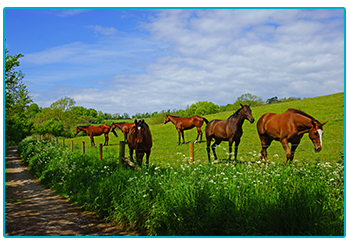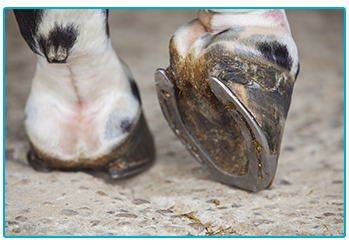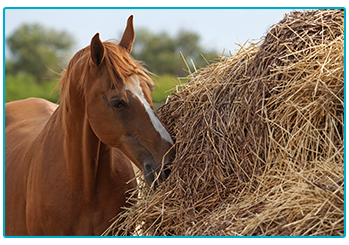Despite the heatwave we’ve already experienced this summer, none of us are under any illusion as to what constitutes a British summer. Mild weather, patchy clouds, intermittent rain showers and the odd, but glorious, hot and sunny spell. This variation in weather systems helps to give us a verdant and vibrant countryside and when the weather is warmer it’s hard to resist the temptation to take our horses out on a hacking adventure. Before you do, it might be worthwhile reading the latest interview with our horse health expert to find out more about a hoof-related problem.

Q: So how do cracked hooves occur?
A: British Summertime often brings with it hoof problems due to the extremes in temperature that the hoof wall is exposed to, varying wet-dry cycles and the effects of the hard ground on the hoof capsule. The hoof wall grows from the coronary band, and the growth of the hoof wall is dependent on nutrients and blood supply. Keratinisation then occurs, which gives the hoof wall its strength. Without this strength the entire hoof is more susceptible to damage.

Q: What are the cracks like?
A: One week it can be wet and cool, while the next warm and dry, and this can play havoc with your horse’s hooves. The cracks will vary in depth, some are superficial and some can be deeper. Sand cracks extend from the coronary band downwards and grass cracks extend up from the ground. Causes include poor hoof balance, overgrown hooves, damage to coronary band and abscesses. Other factors can include environmental, nutritional and genetic reasons.

Q: What is the best prevention against cracked hooves?
Inspect your horse’s feet daily for any signs of cracks, as early detection will aid recovery. Cracks can be prevented by practicing good routine hoof care and ensuring your horse receives a good, balanced diet. If a crack does appear, you should ask your vet or farrier for advice. Treatment will include the identification and treatment of the underlying cause, for instance if it was poor hoof balance.
The best way to prevent cracked hooves is to be responsible and pre-emptive, make sure you check your horse’s feet but also that their general welfare is looked after. There may be a light at the end of the tunnel, several studies have identified that biotin supplementation can help improve horn quality but it could be that corrective farriery may be required to repair and stabilise the crack. If you are unsure on anything to do with your horse’s hooves then you should consider contacting your vet.
All content provided on this blog is for informational purposes only. We make no representations as to the accuracy or completeness of any information on this site or found by following any link on this site. We will not be liable for any errors or omissions in this information nor for the availability of this information. We will not be liable for any loss, injury or damage arising from the display or use of this information. This policy is subject to change at any time.


